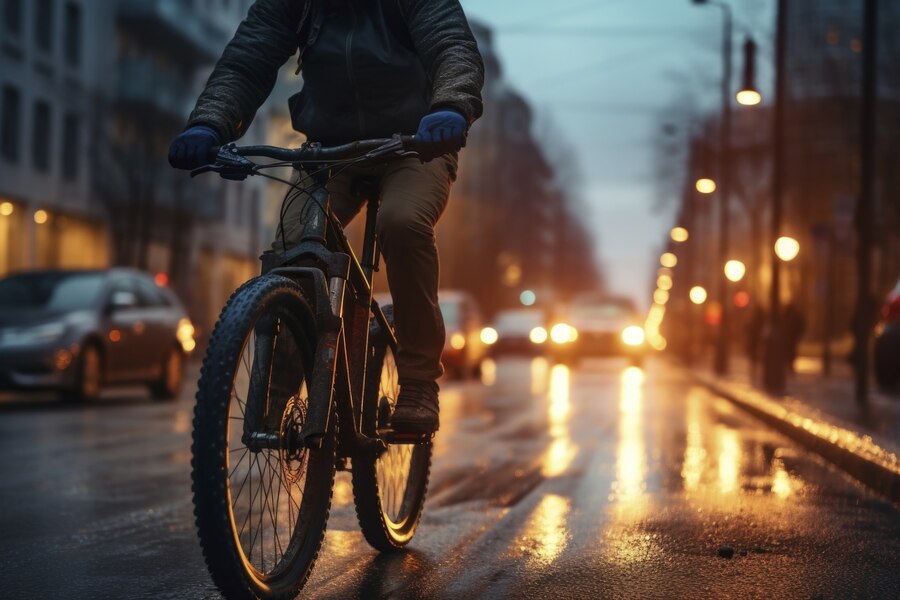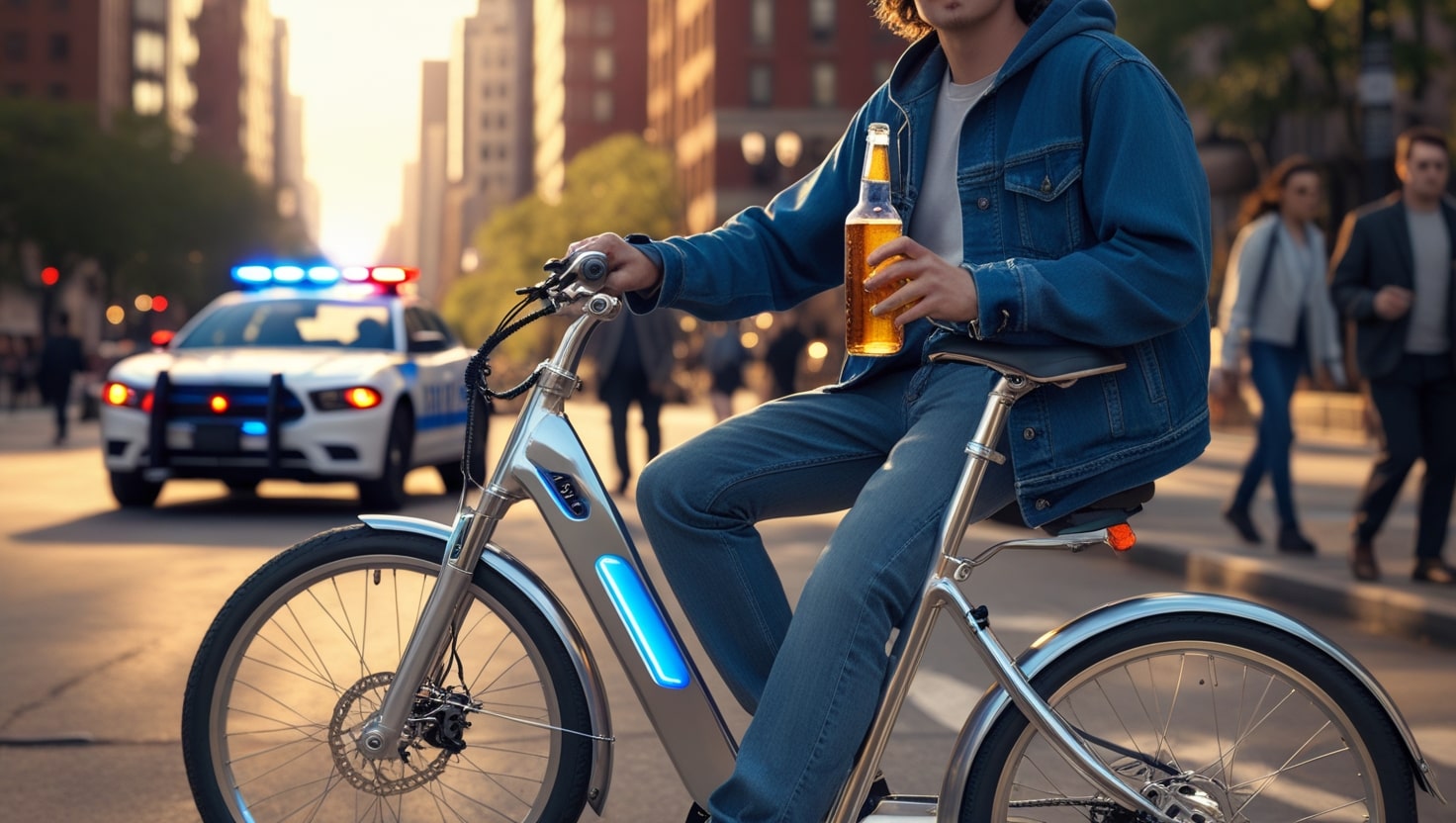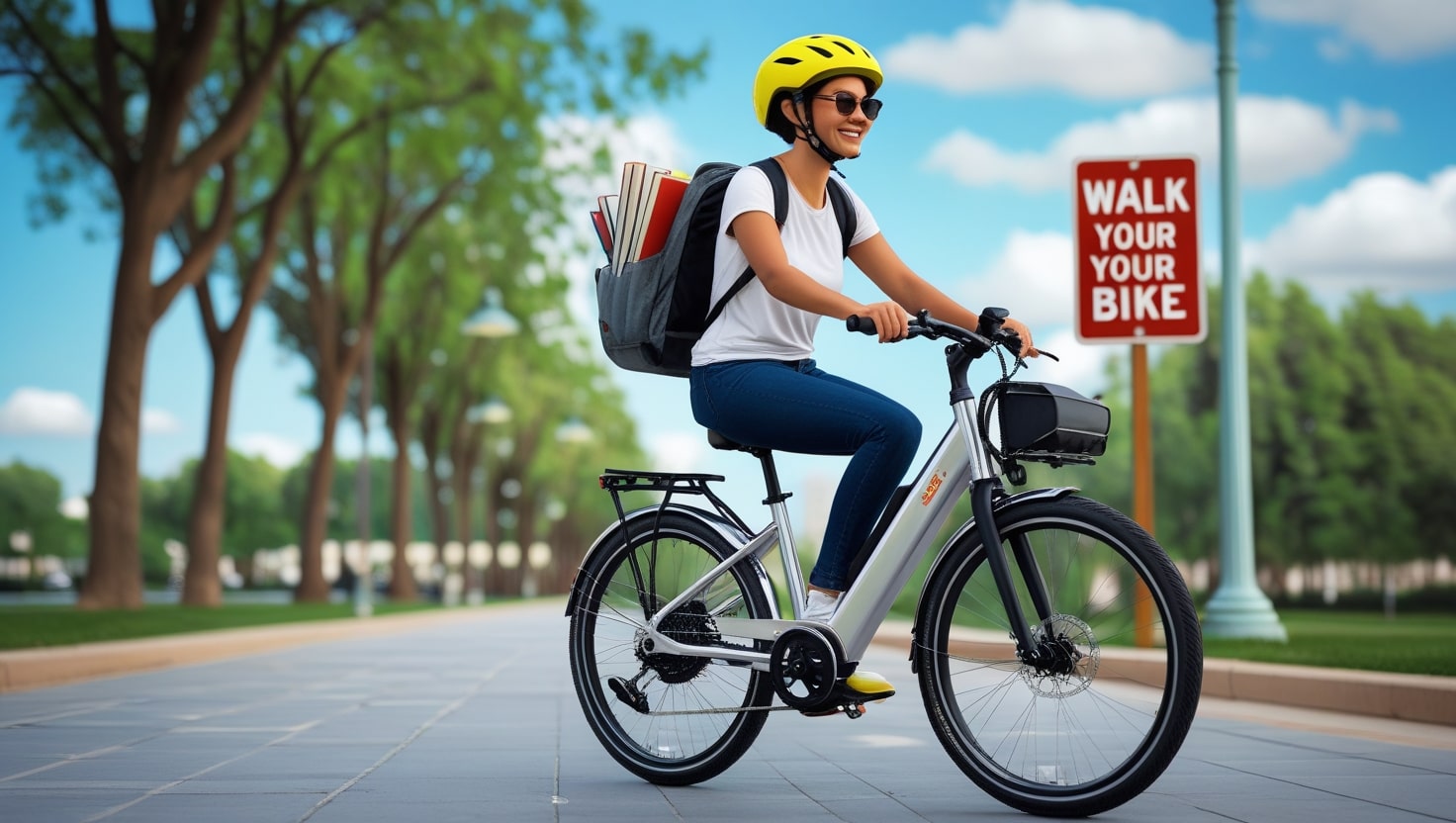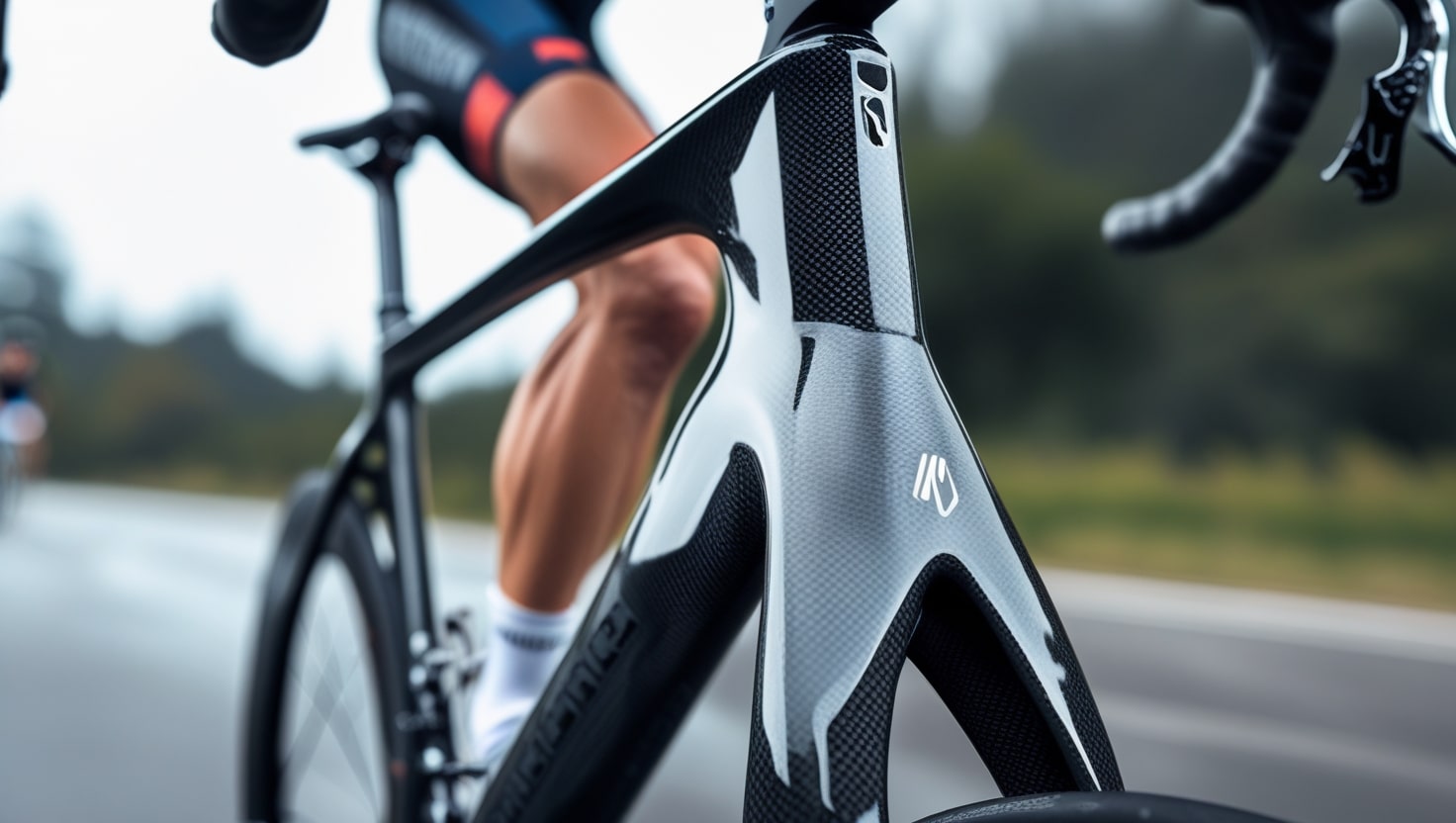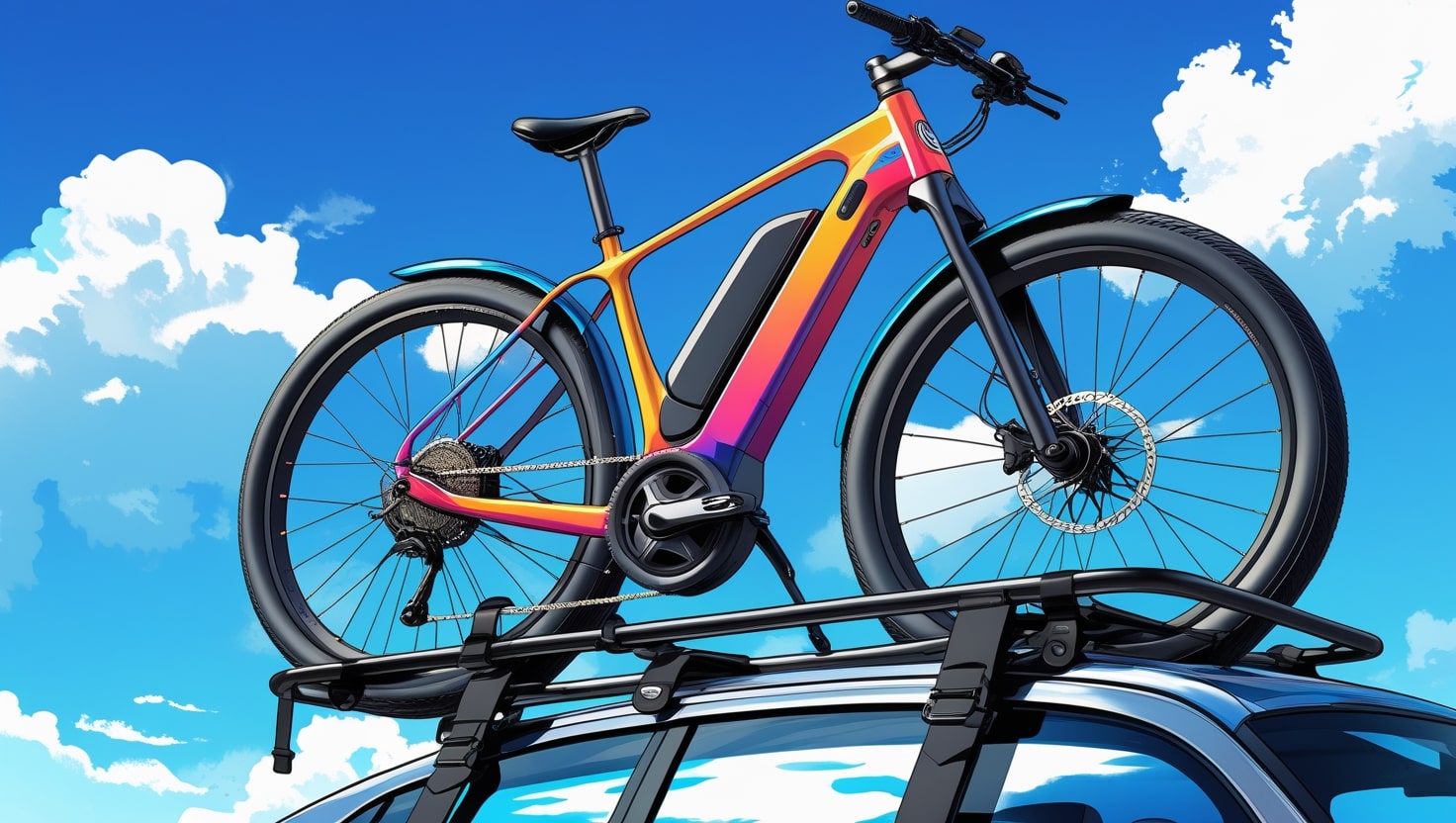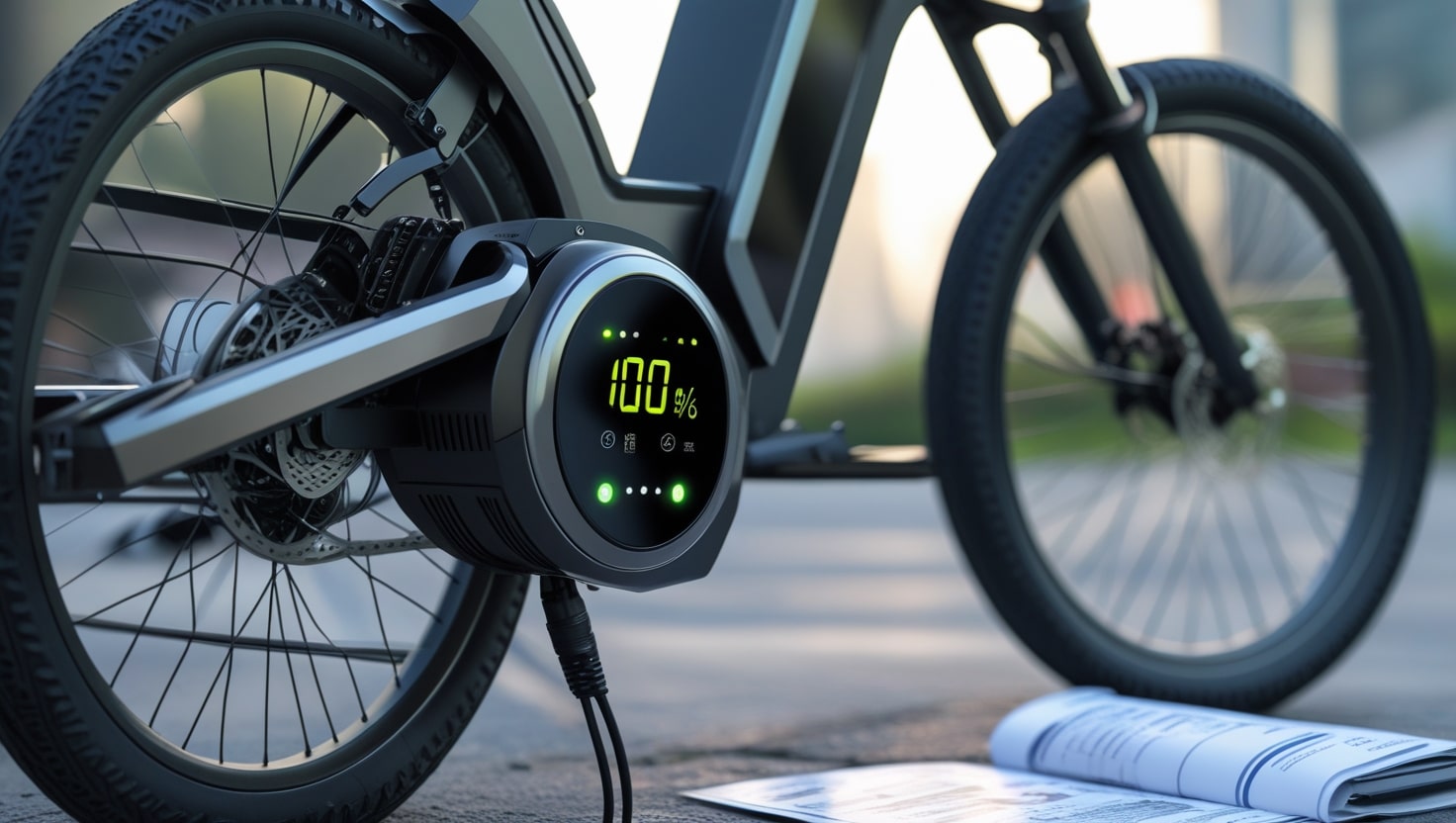Riding an electric bike in the rain can be a unique experience, but it’s important to stay aware of certain things to remain safe. As an avid rider, I’ve found that your setup and clothing play a crucial role. Whether it’s the type of clothing you wear or how you set up your e-bike, staying safe is of the utmost importance.
In this article, I’ll look at safety tips to consider and whether can you ride electric bikes in the rain. Selecting waterproof equipment, for example, can help you stay dry and see clearly. Ensuring your bike has proper fenders and lights can also help. This may sound basic, but these tips are essential for a smooth and enjoyable ride, regardless of the weather. Riding in the rain can indeed be an excellent form of exercise if you take the right precautions.
Related: Can You Pedal an Electric Bike?
Can electric bikes get wet?
Electric bikes can indeed get wet, and most e-bikes are designed to be water-resistant, which makes riding or parking them in the rain perfectly fine. From my experience, I’ve found it convenient to use my electric bike during rainy days without worry. However, it’s important to note that some types of electric bikes are not meant for wet conditions and should be avoided. Ensuring your bike is suitable for all weather can make a huge difference in your riding experience.

Can You Ride Electric Bikes in the Rain
As long as your e-bike is designed to withstand rain, riding one in the rain is completely acceptable.
Not all manufacturers or models are designed for wet weather, so it’s crucial to check this before you go out. From my experience, it’s also wise to avoid puddles and standing water to prevent damage to the electronics of your ebike.
Electric bikes perform well in any weather conditions. Many are water-resistant and provide a complete sense of safety, security, and relative comfort during your ride from start to finish. This makes them a reliable option even in the rain, ensuring a smooth and enjoyable journey.
However, before you head out on your e-bike for a ride in the rain, let’s explore some tips to ensure your ride is safe and enjoyable.
1. Use Bike Fenders
Using fenders on your electric bike is a smart move to keep your clothing dry. While most electric bikes are water-resistant, with the drivetrain and motor handling splashes and the battery staying safe when wet, you should still consider adding fenders to your e-bike. This not only helps protect you from debris on the road but also keeps your bike, battery, and other components protected. From my experience, adding fenders has made riding in the rain much more comfortable and worry-free.
2. Wear Weatherproof Clothing
One of the most challenging components of riding in the rain is how quickly your clothing can become wet. It’s a good idea to wear clothing that will keep you warm and dry. A light raincoat or jacket with water resistance is a must-have for any ride in the rain, as are glasses to help with your vision.
From my experience, it’s best to avoid wearing cotton in wet conditions. Instead, check out synthetics or wool garments for better and safer performance when it’s wet.
Additionally, consider wearing gloves to keep your hands warm and dry.
3. Weatherproof Your Gear
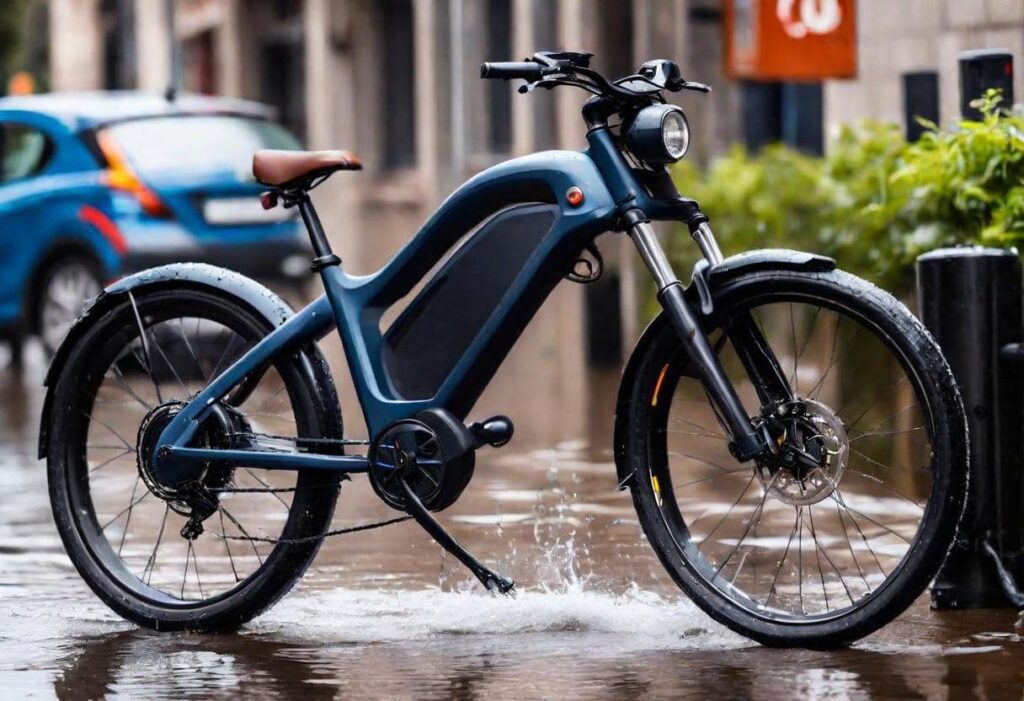
When you ride your electric bike in the rain, water will get everything wet. That’s why it’s important to weatherproof your gear. Whether you carry a notebook, MP3 player, or GPS on your ride, make sure to use sealed and waterproof dry bags to keep everything dry.
From my experience, having the right gear makes a big difference for riders in wet conditions. This way, you can enjoy your ride without worrying about your belongings getting soaked.
4. Use Headlights and Taillights
When you ride your electric bike in the rain, low visibility makes it critical to use head and tail lights. Since you are sharing roads with various types of vehicles, it can be hard for drivers to see cyclists on the road. Before heading out for your ride, consider using blinking head and tail lights on your helmet or handlebars to stay as visible as possible.
When riding your e-bike in the rain, it’s still crucial to apply the brakes earlier than normal. However, remember that reflectors are not a substitute for a proper front and rear light. In my experience, having both lights and reflectors greatly improves safety during a rainy ride.
Related: How to Measure for Bike Helmet
5. Brake Early
Much like driving a car in wet weather, conditions can make it more difficult for bikes to come to a complete stop. Many electric bikes have disk brakes instead of rim brakes found on traditional bicycles, which function better in the rain. When riding your e-bike in the rain, it’s still crucial to apply the brakes earlier than normal.
Additionally, if your tires have high pressure, braking early is crucial to avoid hydroplaning. From my experience, paying attention to these factors can significantly improve your safety during rainy rides. Always be cautious and prepare for the unexpected.
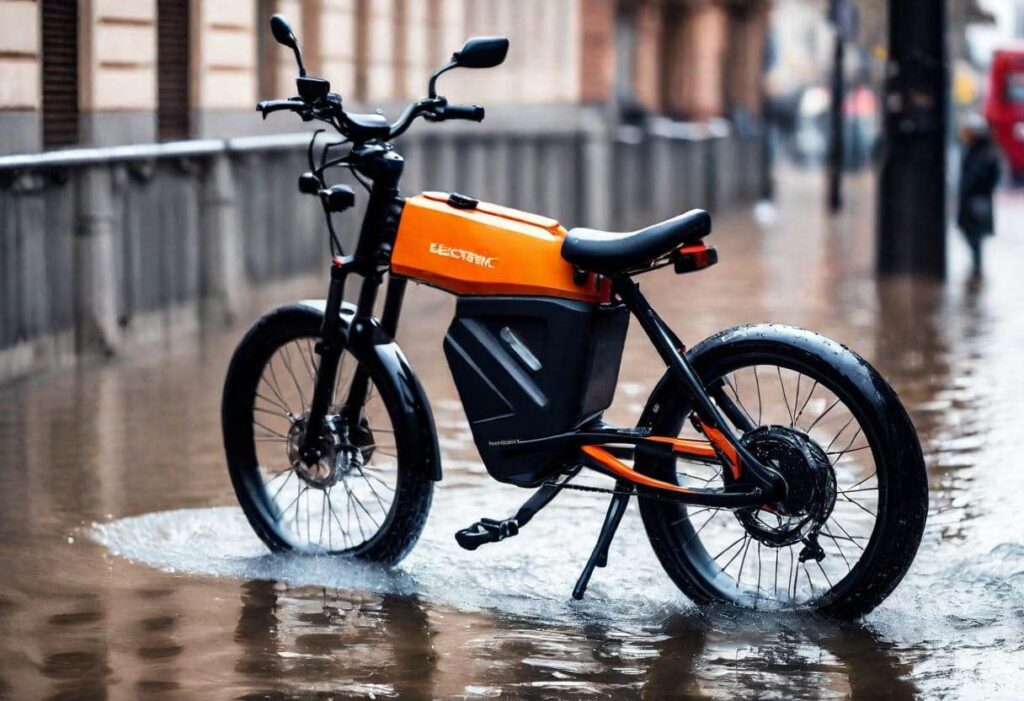
6. Be Cautious of Corners
Electric bikes are incredibly fun to ride and offer an enhanced riding experience compared to traditional bikes due to their additional power. However, it’s crucial to pay attention to how much power you use when riding an e-bike in the rain, particularly when rounding bends. From my experience, the extra power can be thrilling but requires careful handling in wet conditions.
When approaching a corner in the rain, slow down more than you would in normal conditions to avoid slipping. Try to prevent leaning too much around the corner, which helps keep as much of the tire on the ground as possible.
Related: What Does the Exercise Bike Workout?
7. Look for Slick Spots
After the first rain, the ground can become slick due to oil and dirt that haven’t washed away. This makes your ride more unpredictable with many slick spots that you might not see right away. When riding in the rain, it’s important to avoid puddles or standing water and keep an eye out for puddles that look colorful, as these might contain gas or lubricant substances, making them even slicker.
Additionally, avoid painted lines on the road like lane markers, as they become particularly slippery when it rains. Railroad tracks are also slippery when wet, so try to cross railroad tracks at a 90-degree angle whenever possible to stay safe.
8. Make Yourself Visible
On rainy days, road visibility becomes more complicated for everyone. When you ride an electric bike, taking the proper steps to ensure you are visible is crucial. It’s a good idea to wear neon or luminescent clothing with reflectors. This will make you stand out more in low light conditions.
Additionally, always follow traffic laws and be extra cautious to avoid an accident, injury, or mishap.
9. Plan a Safe Route
Before stepping out on your ride, plan a route that is as safe as possible. If you usually go for rides on the road with gravel, loose stones, and cracks in the pavement, try to avoid these areas when riding in the rain. Making this choice will keep you safe and shield your bike from objects and other road hazards that you could miss because of poor visibility in wet weather.
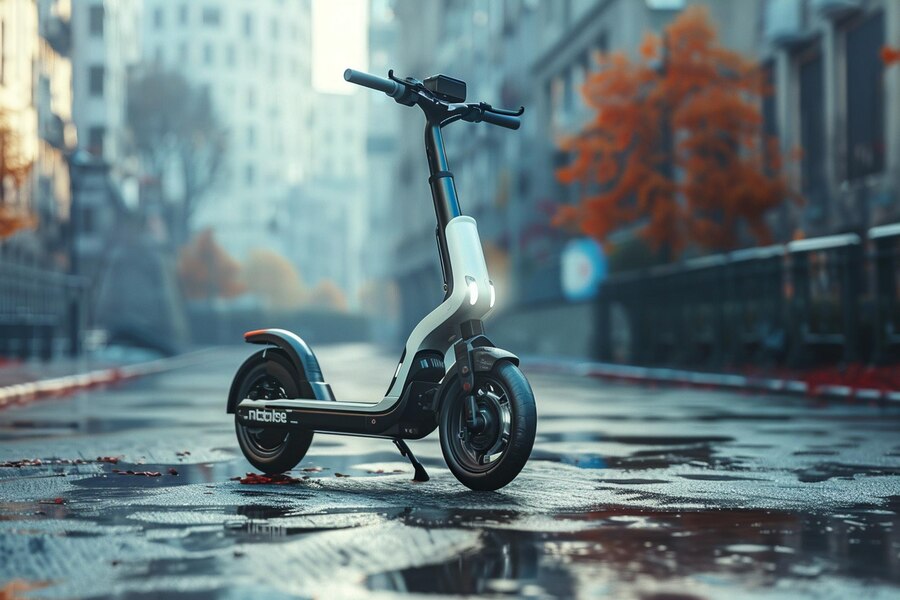
10. Clean Your Electric Bike After You Ride
Lastly, after each rainy ride, take a few minutes to wash off any debris and dry your electric bike. This simple step is crucial for maintaining the well-being of your e-bike. Even though e-bikes are economical and efficient types of transportation, they still require maintenance.
From my experience, regularly washing and drying your e-bike, especially the battery, after a dirty ride can bring considerable benefits over the years.
What You Shouldn't Do:
Don’t Ride in Extreme Weather
Your e-bike can handle light to moderate rain, but if there are heavy storms, hurricanes, or other signs of nasty weather, it’s best to keep both you and your ebike indoors. bike
If you encounter thunder and lightning while on your ride, stop your trip and seek shelter in a dry space for both you and your bike until the storm passes. Make sure it isn’t in an area prone to flooding or with objects overhead that could be knocked over by wind or rain, like tree branches or loose building materials.
Don't Submerge Your Ebike in Water
Avoid submerging or immersing your bike, battery, or any components in water or other liquids, as this may damage the electrical system and create a hazardous situation. Even though the parts of your e-bike are water-resistant, you should still steer clear of big puddles, streams, and really heavy rain. It’s okay for your ebike to get wet, but don’t leave it in the rain for prolonged periods of time.
Don't Ride in Sub-Zero Temperatures
The rainy season sometimes brings cold weather, and it can get really cold. When temperatures drop below zero, it’s wise to avoid riding. To ensure the proper functioning of your battery, do not operate your bike in temperatures below -4°F / -20°C.
Don't Ride Through Puddles
When you ride, try not to plow through puddles. Puddles can hide objects that might puncture your tires. Sometimes, they contain salt water, especially if the roads were recently salted or if you live in coastal conditions. Salt is corrosive and has high electrical conductivity, which can be bad for your battery and mechanical components.
If your battery does get salt water on it, remove it from the e-bike and use a fresh, dry cloth to wipe it clean. Additionally, use a clean cloth moistened with fresh water to clean the bike’s frame and mechanical parts.
Don't Push Yourself
When in doubt, it’s best to avoid riding. While e-bikes are undeniably fun and convenient, never ride beyond your abilities. Riding in the rain requires extra concentration and awareness. If you’re not confident, trust your instincts and stay indoors. There will be better riding days ahead.

